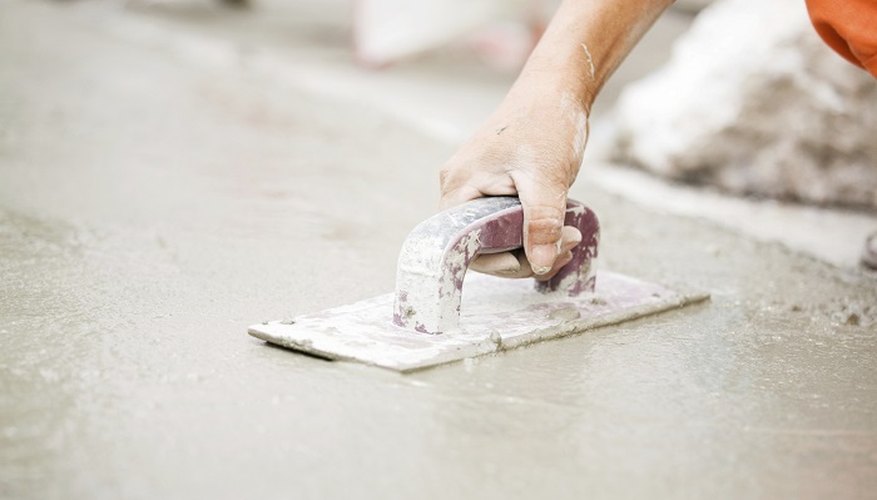Polyvinyl acetate -- or PVA -- is a versatile chemical compound with a wide range of uses. It is a fast-drying, water-thinned bonding agent that is most commonly used as a sealer before painting a concrete floor with enamel or epoxy-based paints. PVA is environmentally safe and meets UK environmental standards, making it the preferred concrete sealer for home and commercial use.
Clear the floor area of any equipment or furnishings.
Remove any debris from the concrete surface with a scraper or wire brush.
Sweep and vacuum thoroughly to clean the floor area.
Apply a solution of trisodium phosphate cleaner, mixed according to the manufacturer's directions, and use a scrub brush to remove any oil, grease or other stains from the concrete surface. Rinse the floor thoroughly with clean water.
- Polyvinyl acetate -- or PVA -- is a versatile chemical compound with a wide range of uses.
- Apply a solution of trisodium phosphate cleaner, mixed according to the manufacturer's directions, and use a scrub brush to remove any oil, grease or other stains from the concrete surface.
Fill a roller pan with PVA, full-strength or diluted according the manufacturer's specifications for your application, and use a paint roller to coat the concrete surface with an even layer in overlapping strokes. Cut-in the PVA solution next to any steps or walls where the roller does not reach.
Allow the floor to dry for at least two to three hours. If you're applying a second coat of PVA, allow the area to dry for six to 12 hours between coats. The floor should cure for a minimum of 24 hours before replacing equipment or furnishings.
TIP
Clean up with warm water.
PVA concrete floor sealer is best applied when the concrete floor temperature is 15C to 20C.
